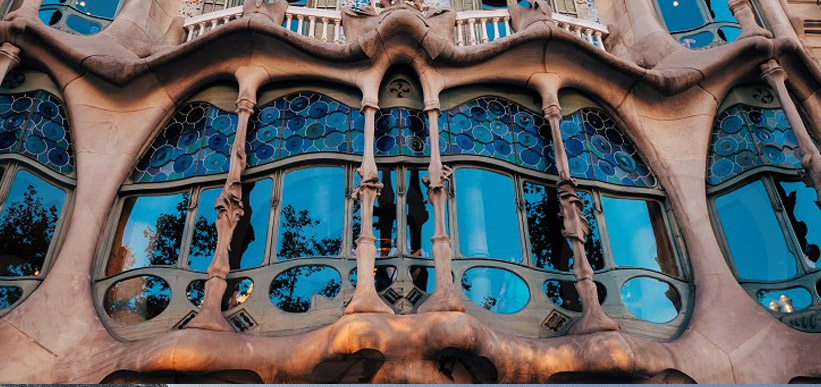Also called Stile Liberty in Italian and Jugendstil in German, the Art Noveau architecture has an unmistakable charm. This architectural style was used in Europe extensively during the late 18th and early 19th centuries. Architects like Antoni Gaudi and Hector Guimard used this style of architecture to design some of the prominent buildings.
The common features of this style of architecture are colorful flourishes and detailed works of iron and glass. You’ll find the interiors of the Art Noveau buildings as charming as their exteriors. The interiors of such buildings are decorated with custom furnishings and hand-painted wall treatments. Here we present some marvelous buildings that were constructed with the Art Noveau style.
1. House with Chimaeras (Ukraine)
Located in the Ukrainian capital, Kiev, this building was constructed during the period between 1901 and 1902. It was built by Wladyslaw Horodecki, a Polish architect. He had originally constructed it as his upmarket home. Later, he had to sell the building owing to his financial hardships.
House with Chimaeras changed ownership several times until it was occupied by an official polyclinic of the Communist Party. Since 2005, this building has been used as a presidential residence for ceremonies of official and diplomatic nature.
2. Casa Batllo (Spain)
This Art Noveau masterpiece was designed by Antoni Gaudi and is located in the center of Barcelona. You’ll find unusual tracery, flowing sculpted stone work, and oval windows on the ground floor.
Much of the façade has been decorated with colorful mosaic made of trencadis or broken ceramic tiles. The building is the remodeled version of a previously built house. It was redesigned by Antoni Gaudi in 1904 and has been refurbished several times since then.
3. Old England (Belgium)
This was a former British department store. It was constructed by the Belgian architect Paul Saintenoy towards the end of the 19th century. Located in downtown Brussels, this building is a museum of musical instruments today. It was purchased by the Belgian government in 1978.
The restoration and renovation work on the building began in 1989. It took more than 15 years to complete the restoration and renovation work. The city’s Monuments and Sites Directorate listed this building as a protected monument in the same year.
4. Majolikahaus (Austria)
One of the two famous Linke Wienzeile buildings, Majolikahaus or Majolica House features a façade covered with majolica. They are tiles made of colorful glazed earthenware that have floral designs on them. Besides being decorative, the façade was easy to clean using fire hoses. The Linke Wienzeile buildings were constructed by Otto Wagner, an Austrian architect and urban planner.
His student, Alois Ludwig, designed the façade of the building. The Linke Wienzeile buildings were designed using the Vienna Secession style of architecture. It is closely related to the Art Noveau architectural style.
5. Museum of Applied Arts (Hungary)
It is the world’s third-oldest museum of applied arts. Located in Budapest, the capital city of Hungary, this museum was built in the late 19th century. It was designed by the Hungarian architect, Odon Lechner in the Hungarian Secession style.
This Hungarian architectural style is a variation of the Art Noveau style. The building features a green roof and its interior has Hindu, Mogul, and Islamic designs. In recent times, plans have been developed for its renovation as it is in a fairly bad condition.

